Where Locals Eat
Travel, E-commerce
Innovation development for a new business entity exploring travel dining experiences, personal project, Summer 2022

ROLE: UX Research, UX Design, Product Design
METHODS: Strategic Foresight, Market Landscape Analysis, Secondary Research, Survey, In-depth Interviews, Design Synthesis, Prototyping
TOOLS: Miro, Figma, Keynote, User Bob Testing
TEAM: Solo
Business context & problem
Tourism dining experiences often lack authenticity, with travelers struggling to find genuine local cuisine beyond tourist traps. This represents both a market opportunity for local restaurateurs and a need for travelers seeking authentic experiences. This project aimed to create a platform connecting travelers with local dining experiences, addressing the growing global trends toward digital responsibility, hybrid experiences, and lifestyle adaptability.
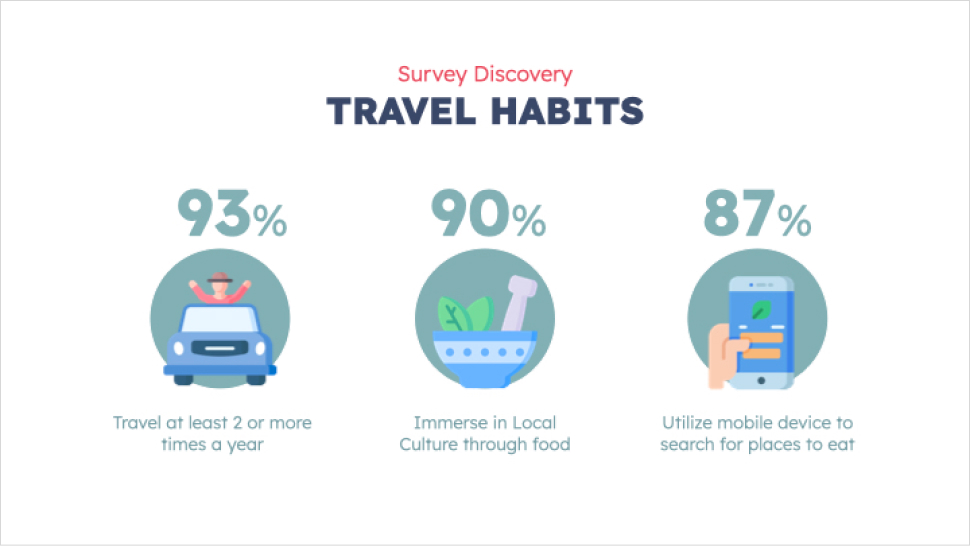
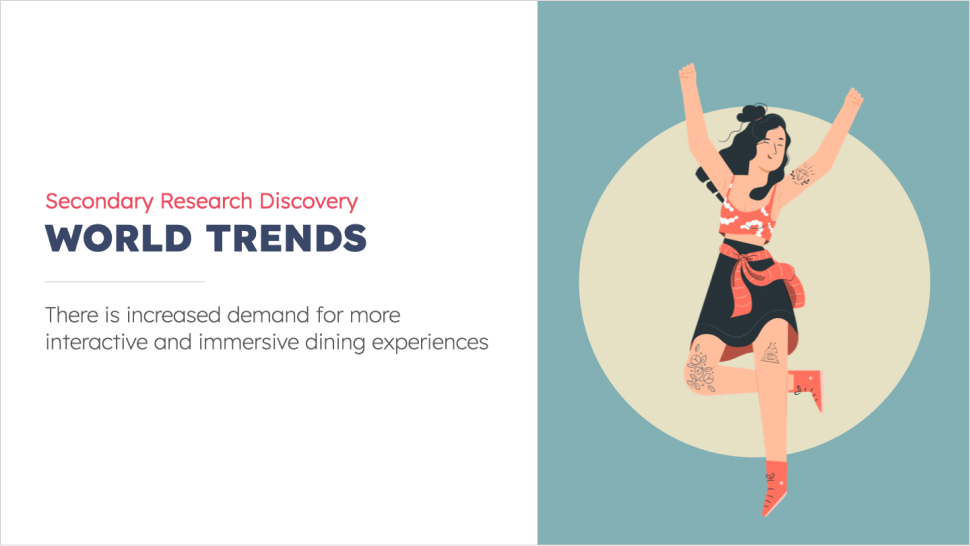
My role & leadership
As the sole UX researcher and designer on this personal innovation project, I led end-to-end strategy and execution. I identified the market opportunity, conducted comprehensive research, developed the concept, and designed the solution. My approach blended strategic foresight with tactical implementation to create a viable product in a relatively unsaturated market space.
Strategic approach
My approach centered on three key research-driven value pillars:
- Immersive Experiences: Creating authentic culinary connections between travelers and local hosts
- Reliability: Ensuring quality and safety through verified food handlers
- Empowerment: Enabling small local businesses to reach new audiences
Through competitive analysis, I identified a white space opportunity for a platform offering communal yet exclusive dining experiences with certified food handlers—addressing safety concerns while maintaining authenticity.
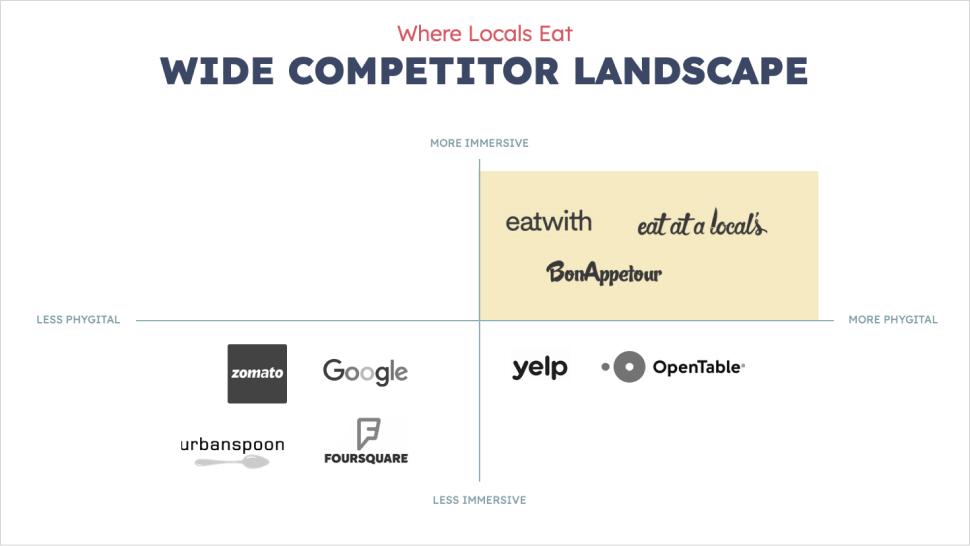
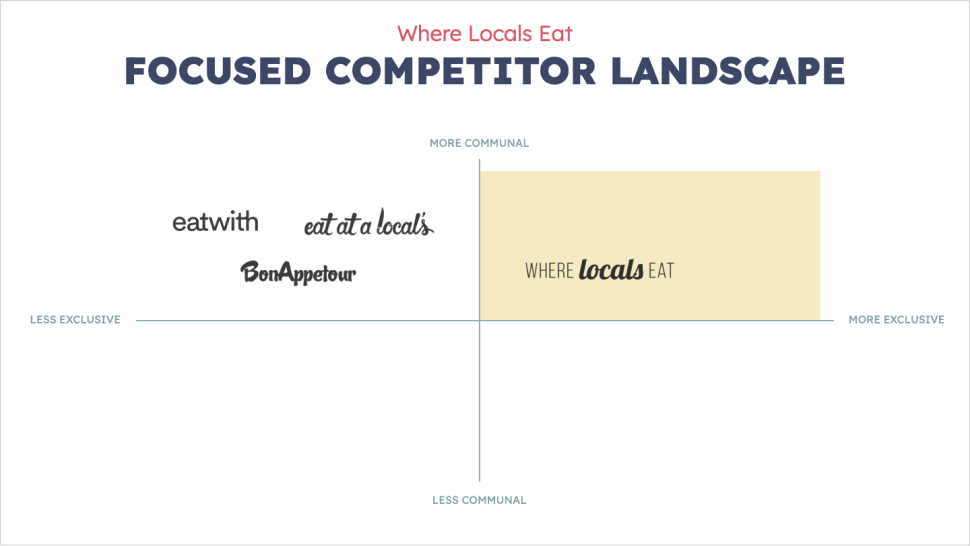
Research & key insights
I conducted multi-phase research including secondary research, surveys, and in-depth interviews with both travelers and local hosts.
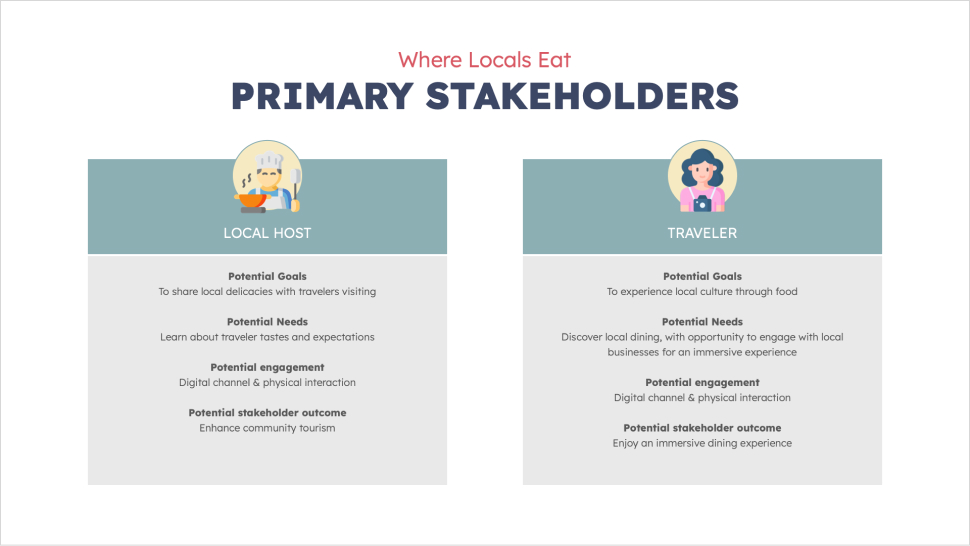
Key Traveler Insights:
- Desire for authentic local cuisine over tourist offerings
- Need for pre-travel planning and menu exploration
- Interest in customized and interactive dining experiences
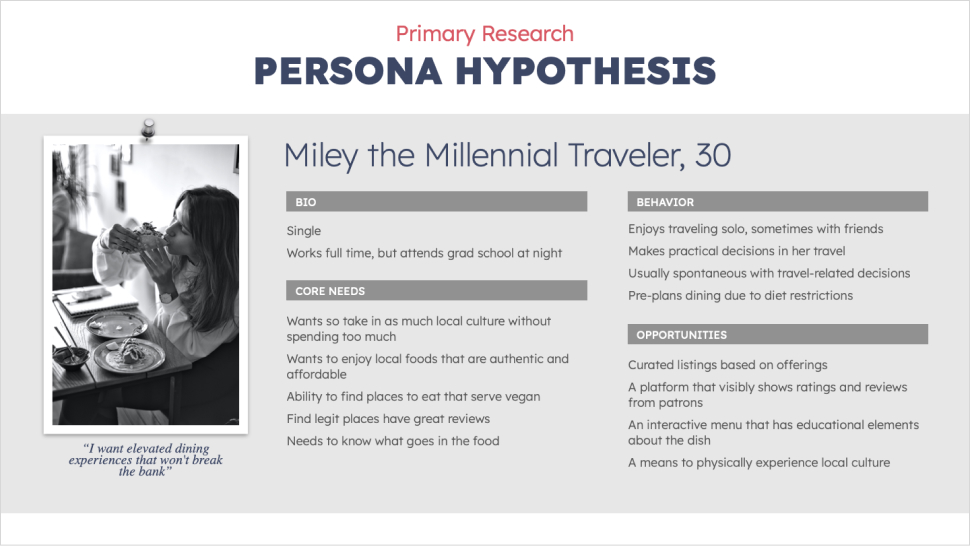
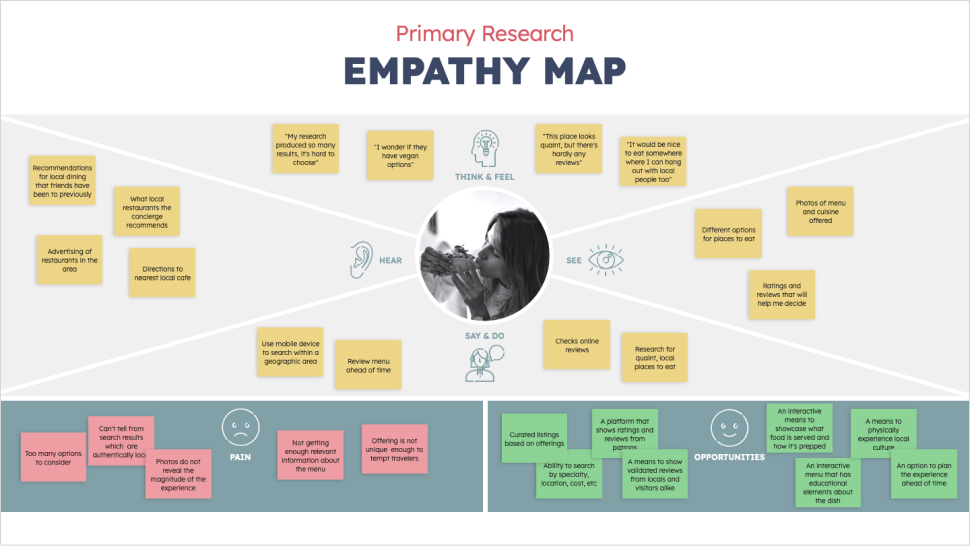
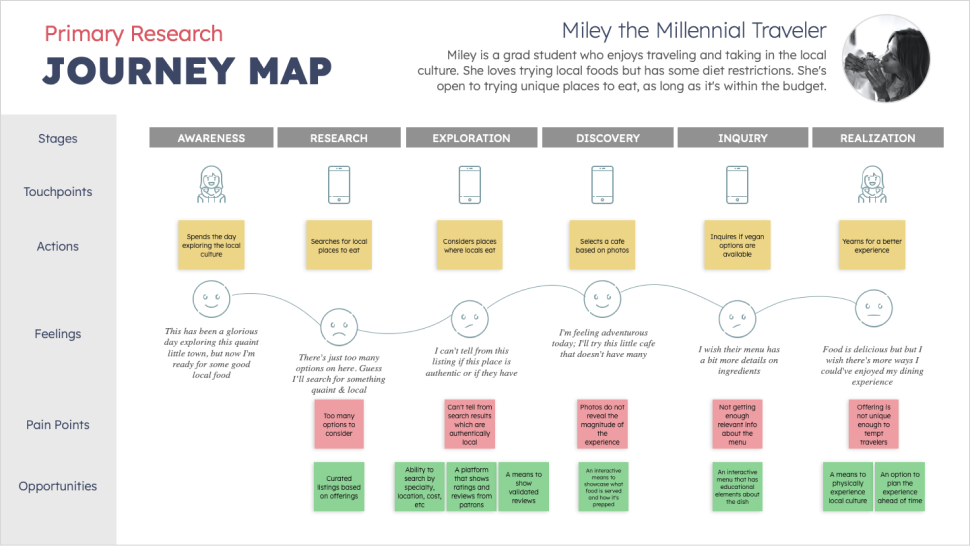
Key Local Host Insights:
- Desire to promote their businesses to non-natives
- Interest in offering elevated dining experiences (customized menus, interactive experiences)
- Opportunity to expand beyond food service
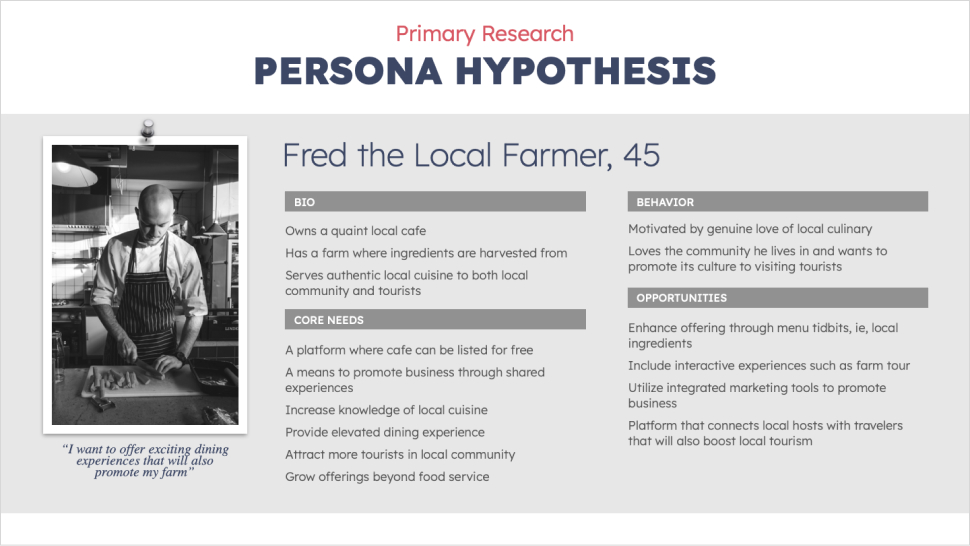

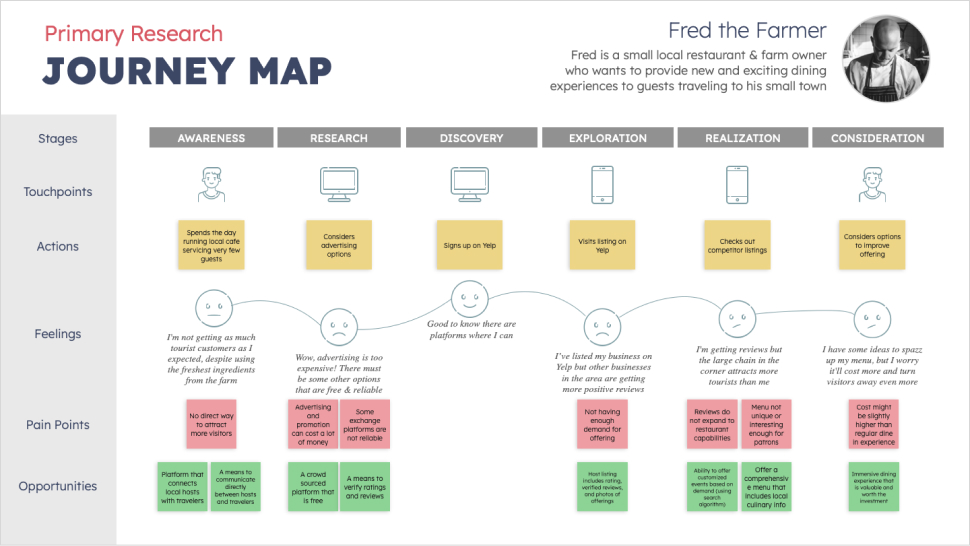
Strategic decisions
Based on research insights and competitive analysis (examining EatWith, BonAppetour, and Eat at a Local's), I made several key strategic decisions:
- MVP Focus on Travelers: Prioritized the traveler experience for the initial product phase to enable faster testing with a larger user group
- Certified Food Handlers Only: Unlike some competitors, restricted hosts to certified food handlers to ensure safety and quality
- Feature Prioritization: Used a feasibility/value matrix to determine which features to implement in the MVP
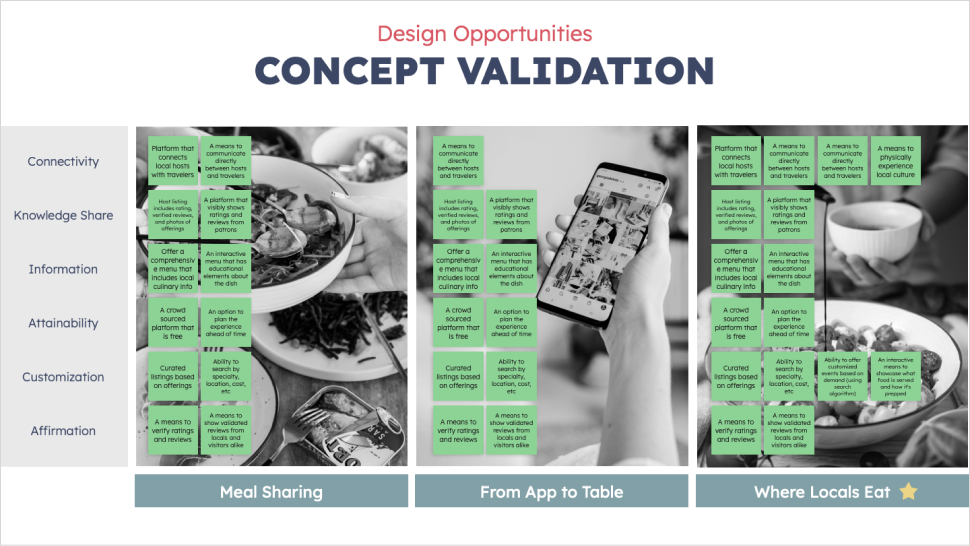
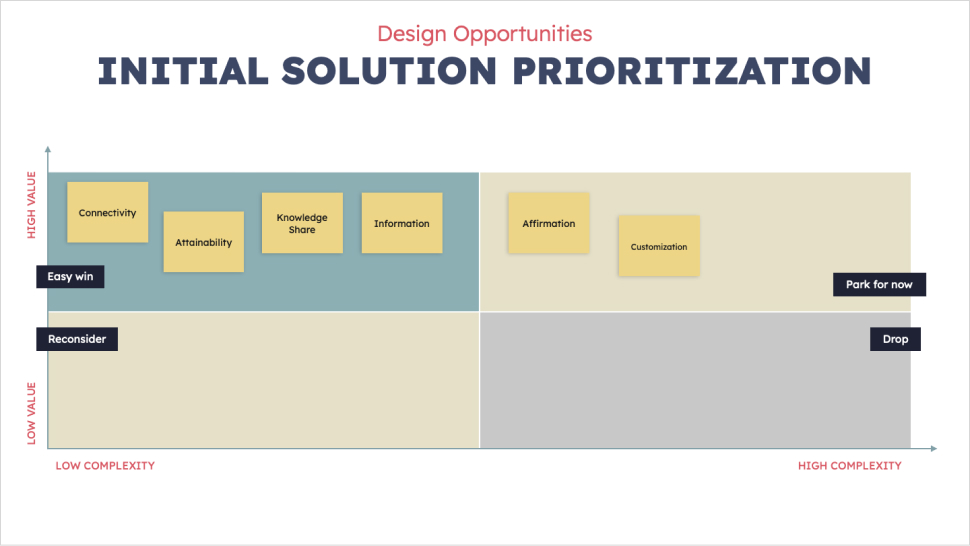
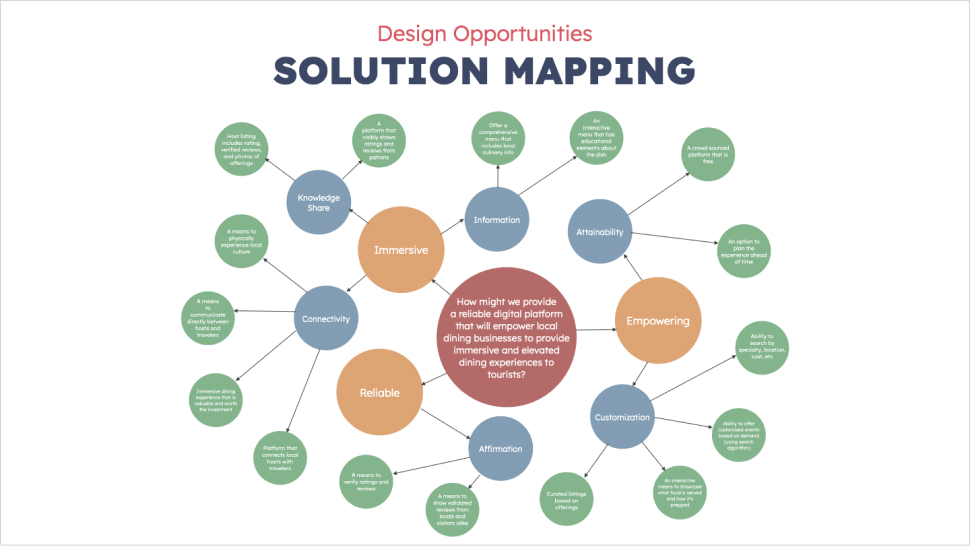
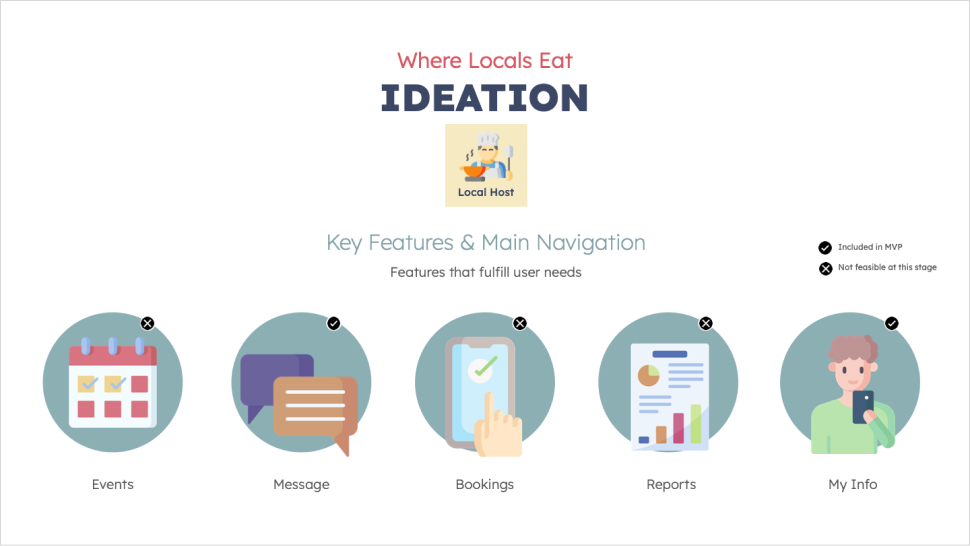
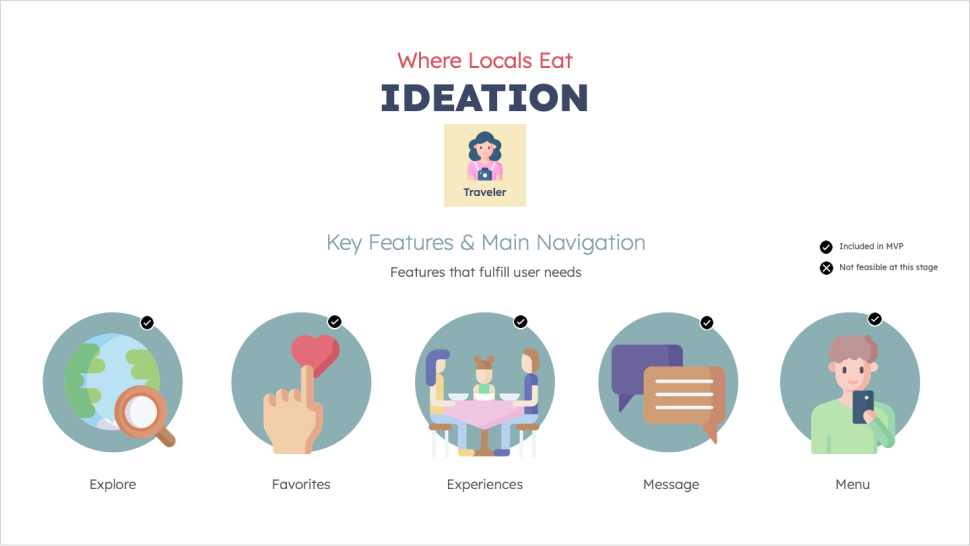

Design solution
The resulting product was a mobile application allowing travelers to:
- Discover local dining experiences based on location
- View detailed information about hosts, venues, and menus
- Book and manage reservations
- Communicate with hosts
- Access a personal experience history
Key differentiators included verified food handlers, customizable dining experiences, and cultural context around local cuisine.
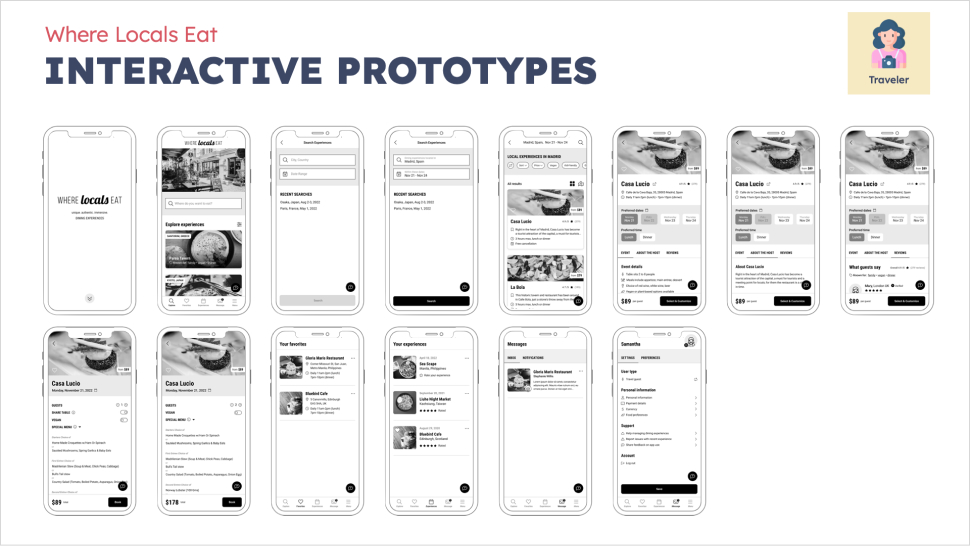
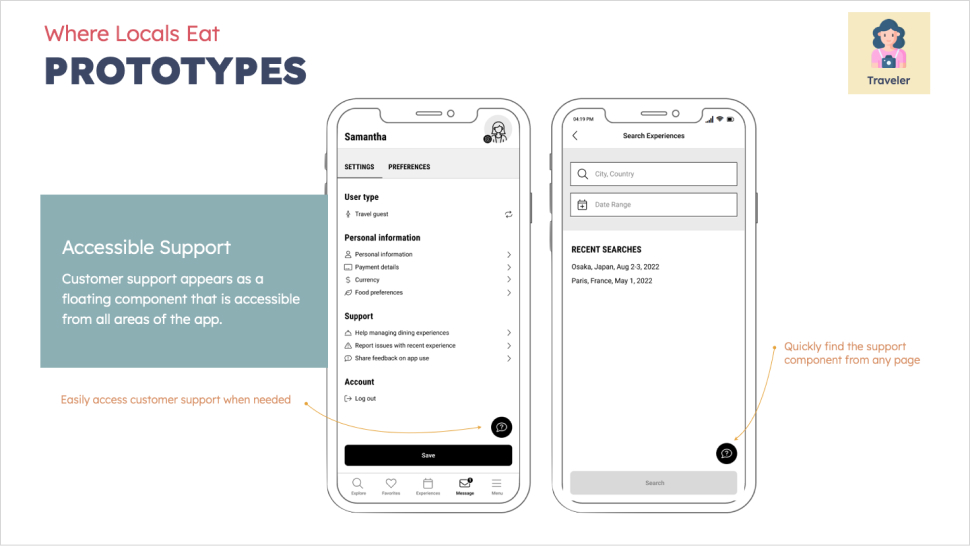
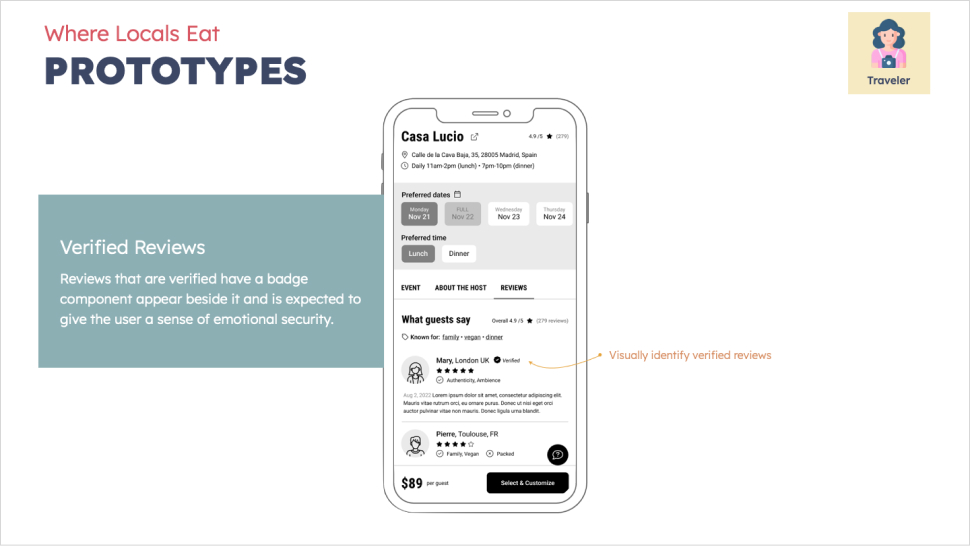

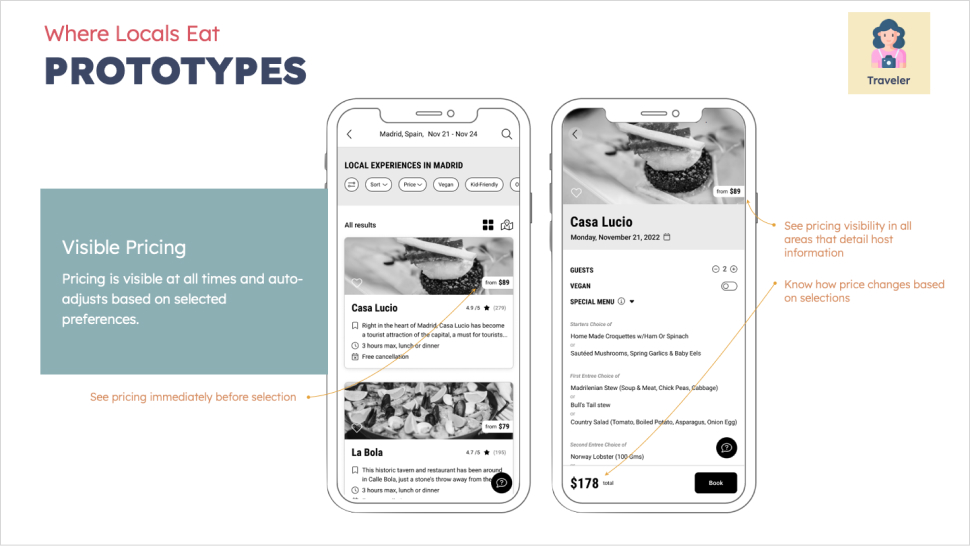
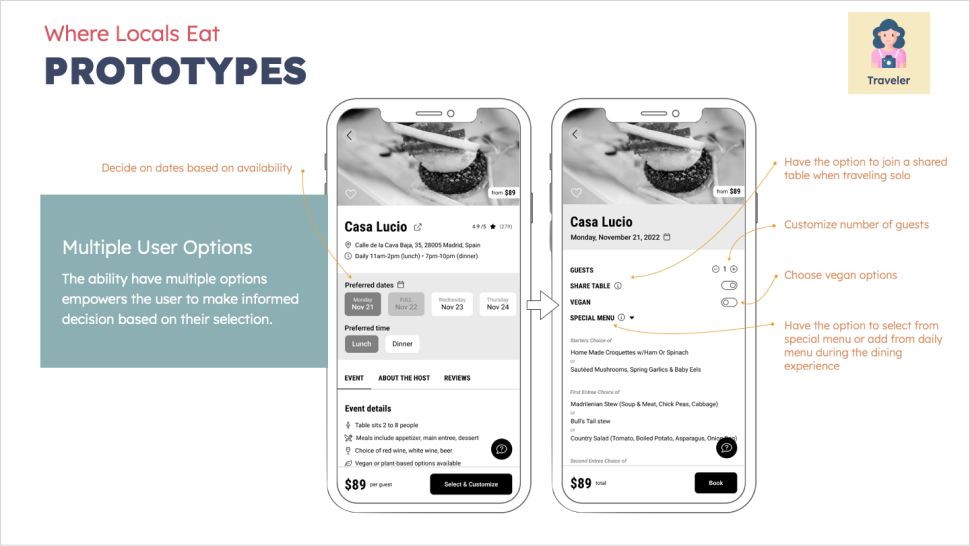
Results & validation
Usability testing with 5 participants validated the core concept and usability. Key findings included:
- Strong positive first impressions of the concept
- Successful completion of key booking tasks
- Valuable feedback on branding and feature enhancements
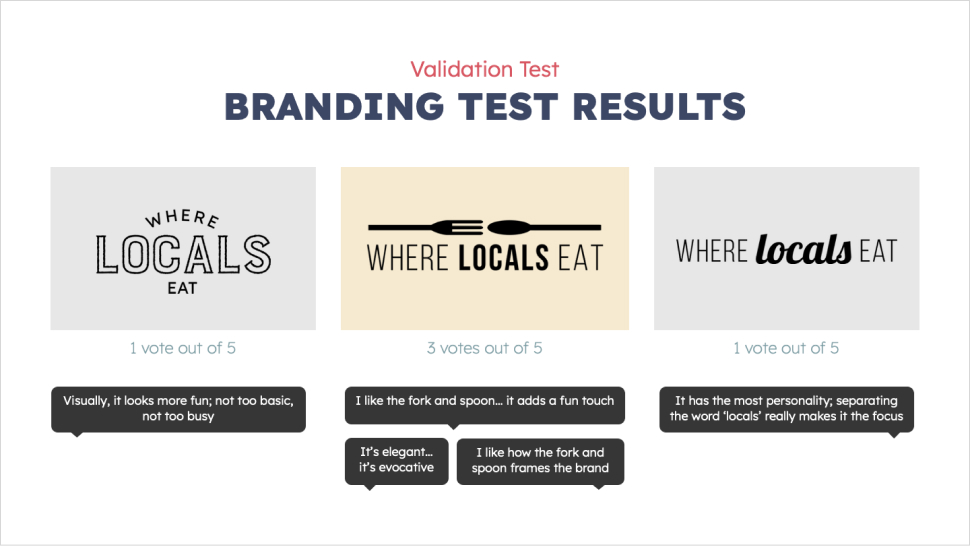
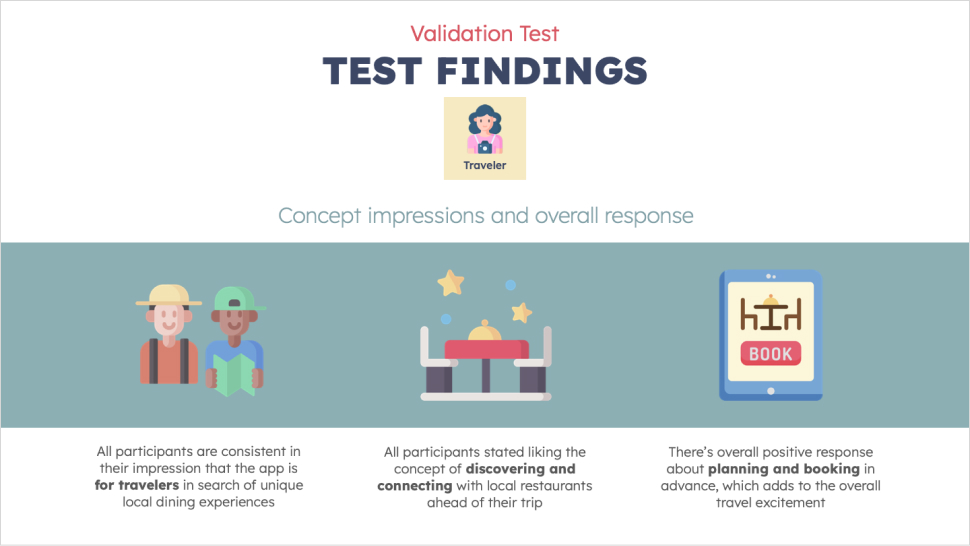
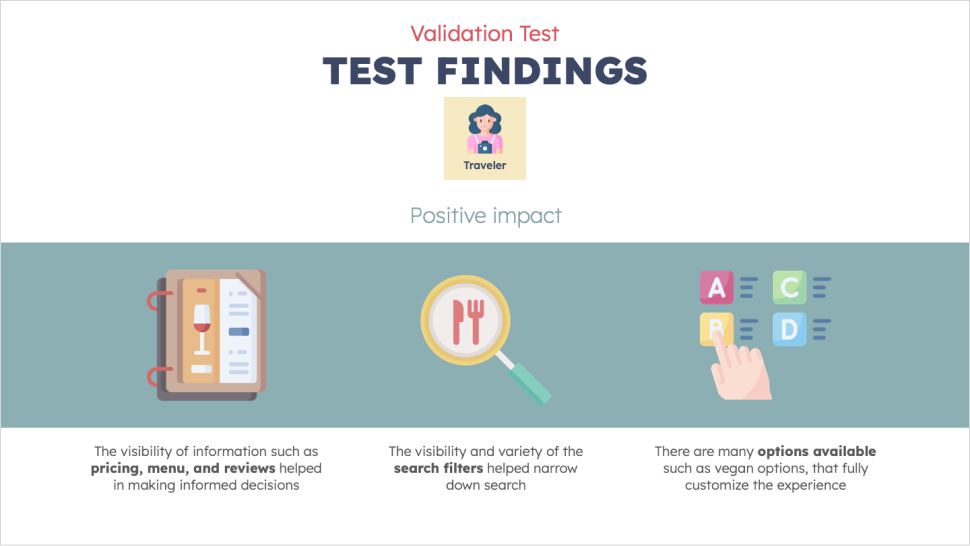
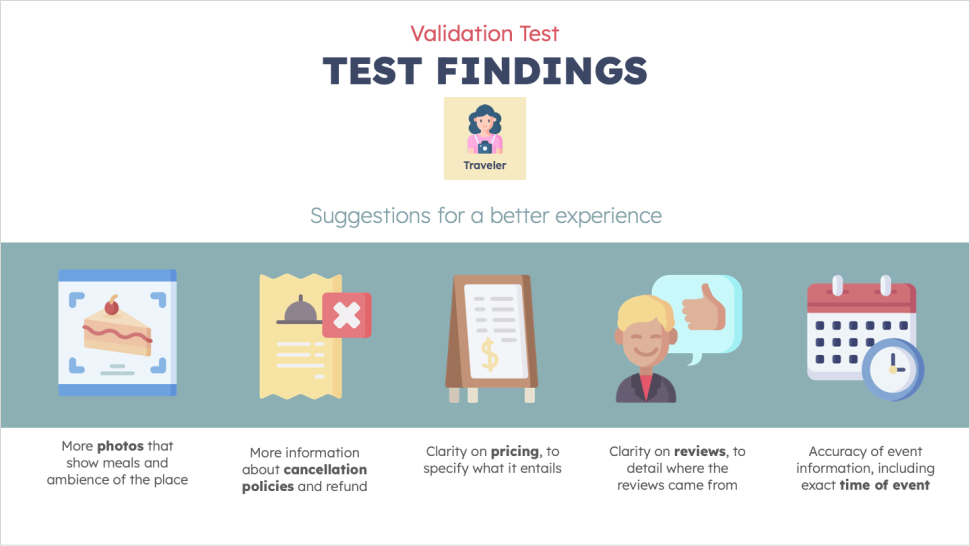
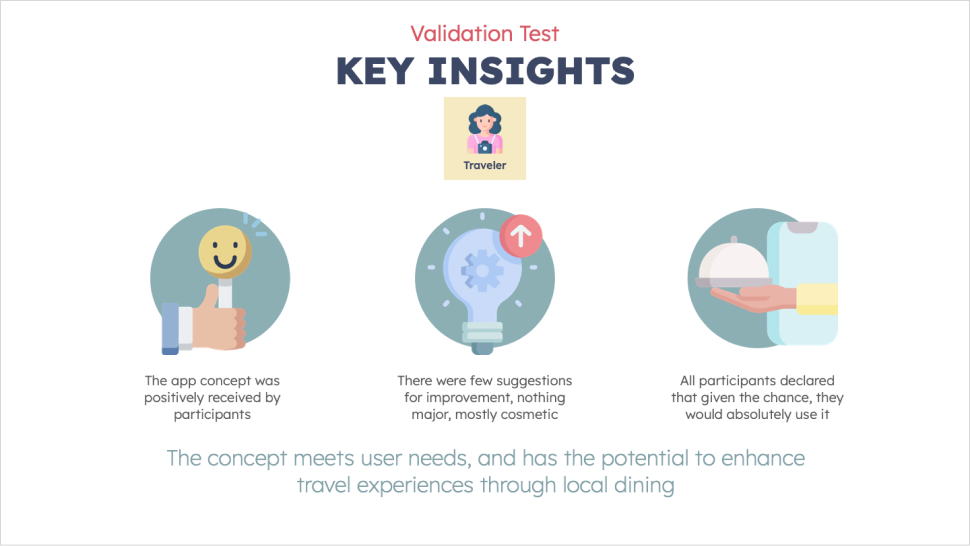
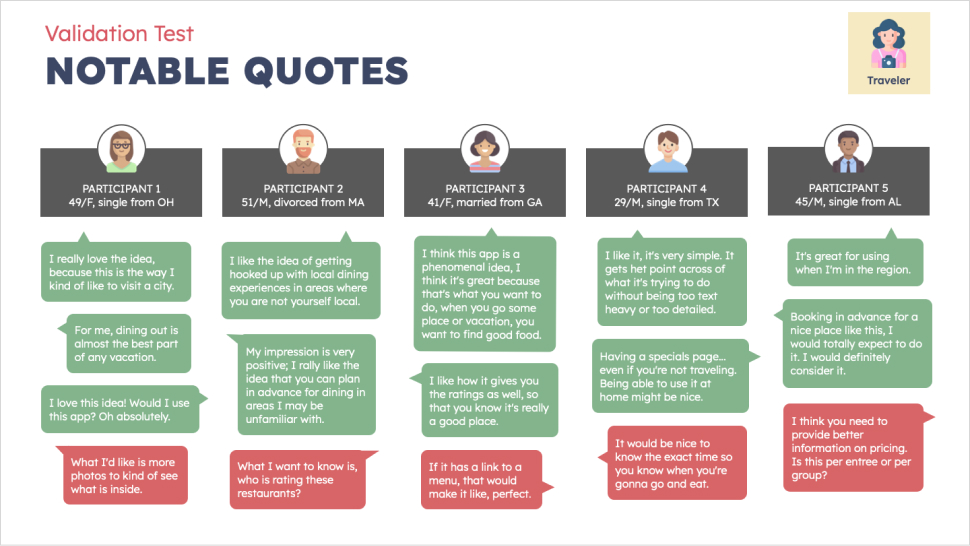
The second round of testing confirmed improvements and led to the final high-fidelity design.
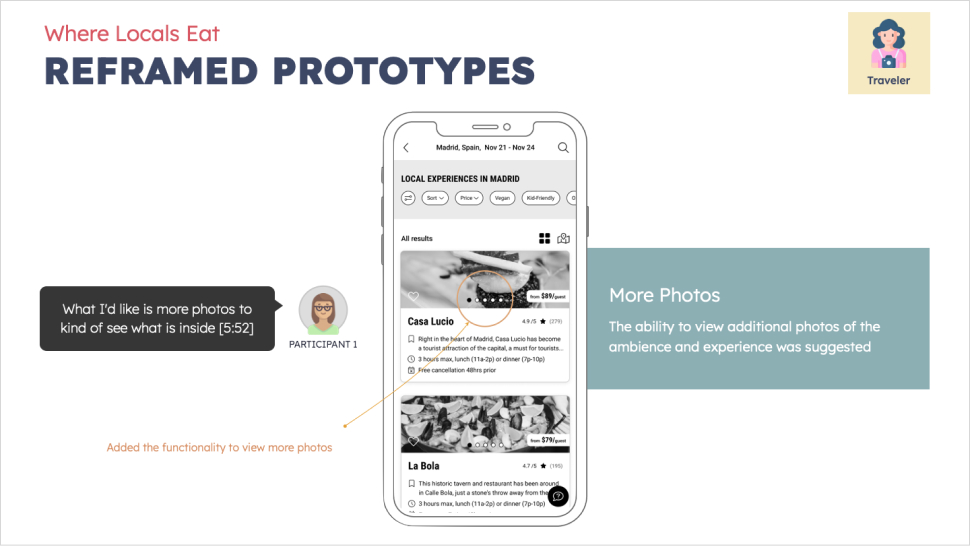
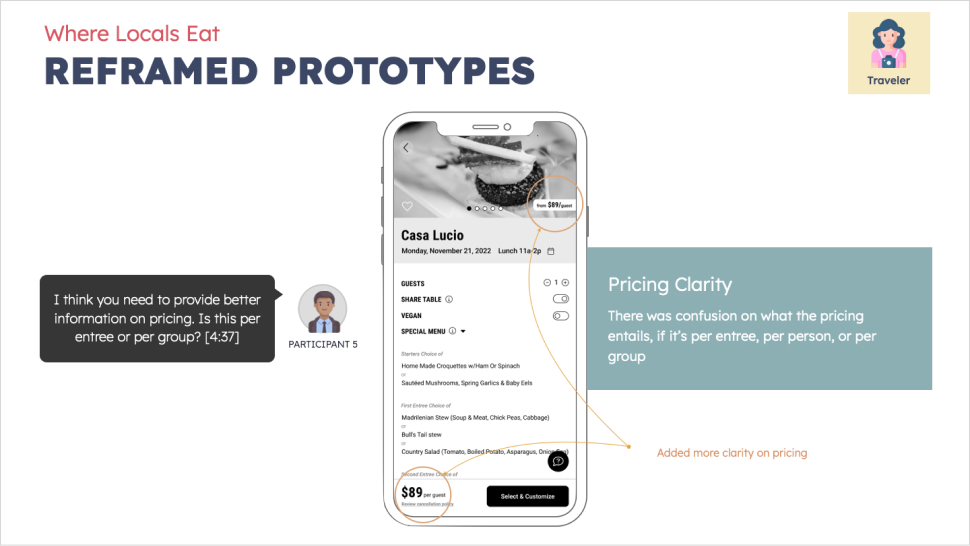
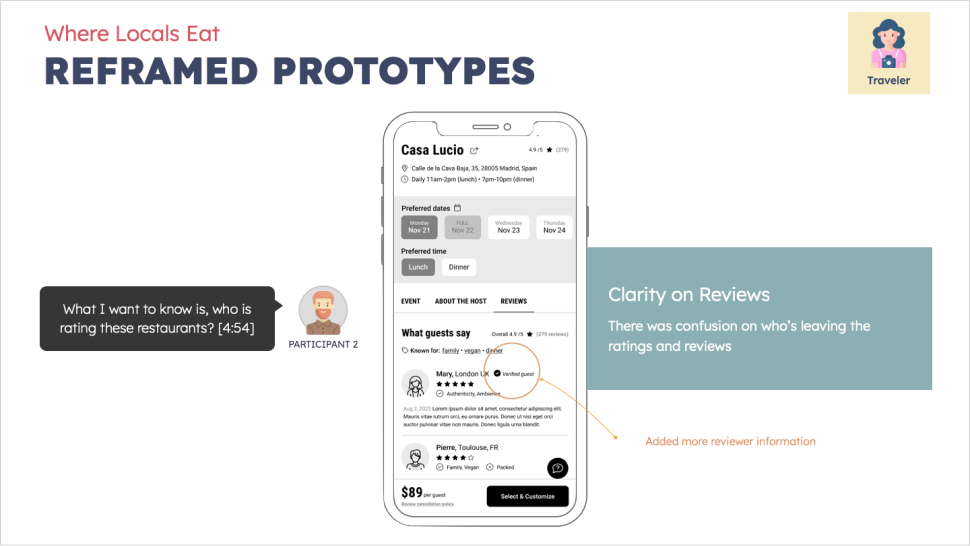
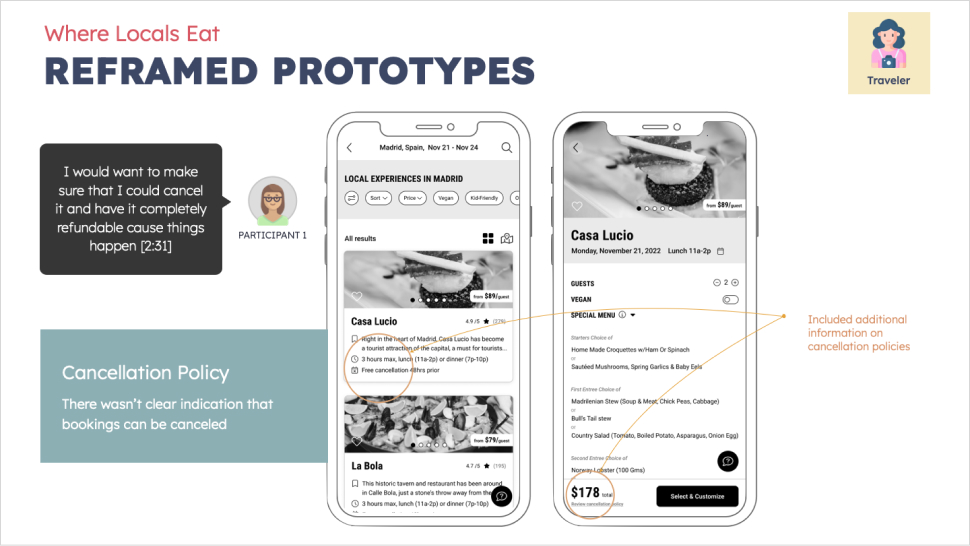


Business impact & market potential
Market analysis using Porter's Five Forces and competitor landscape mapping revealed:
- Unsaturated market with few direct competitors
- Growing demand for authentic travel experiences
- Potential for global expansion beyond competitors' limited geographic coverage
- Opportunity for revenue through booking fees while providing value to both travelers and local businesses